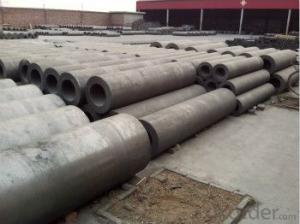When we talk about the potential and performance of graphite electrodes, we’re diving into a world that’s both fascinating and incredibly important. You see, graphite electrodes are the unsung heroes of many industrial processes. They’re the workhorses that power our furnaces, our batteries, and even our electronics. But what makes them so special? Let’s explore their potential and performance in a way that’s a bit more personal and less formal, because these little guys deserve some recognition.
First off, graphite electrodes are made from, you guessed it, graphite. But not just any graphite – it’s high-quality, high-purity graphite that’s been specially treated to enhance its properties. This treatment process is what gives these electrodes their exceptional performance characteristics. They’re resistant to corrosion, they can handle high temperatures, and they’re incredibly conductive. These are the traits that make them perfect for a variety of applications.
Now, let’s talk about their potential. Graphite electrodes have a lot of it. They’re versatile and can be used in a wide range of industries. From steel production, where they’re used to melt scrap metal, to aluminum smelting, where they help to reduce the raw material to the metal, graphite electrodes are indispensable. They’re also used in the production of minerals, chemicals, and even in the glass industry. The potential for their use is vast, and it’s only limited by our imagination and innovation.
But it’s not just about their potential in different industries. Graphite electrodes also have a lot of potential when it comes to their performance. They’re designed to last. They can withstand the rigors of industrial processes and still maintain their integrity. This durability is a testament to the quality of the material and the craftsmanship that goes into making each electrode.
One of the most impressive aspects of graphite electrodes is their ability to conduct electricity. They’re one of the best non-metallic conductors out there. This high conductivity allows for efficient energy transfer, which is crucial in many industrial processes. It’s like they’re the power lines of the industrial world, delivering electricity where it’s needed most.
Another thing that sets graphite electrodes apart is their resistance to corrosion. This is a big deal because it means they can be used in environments that would quickly degrade other materials. They can handle the heat, the chemicals, and the pressure without breaking down. This resistance to corrosion is a key factor in their longevity and reliability.
And let’s not forget about their role in the battery industry. Graphite electrodes are a critical component in many types of batteries, including lithium-ion batteries, which are used in everything from smartphones to electric cars. Their ability to store and release energy efficiently makes them ideal for these applications.
But the performance of graphite electrodes doesn’t stop there. They’re also used in electric arc furnaces, where they help to generate the intense heat necessary for melting steel. This is a process that requires precision and control, and graphite electrodes deliver on both counts. They’re the silent partners in the creation of some of the strongest and most durable materials we use today.
So, as we wrap up this less formal, more personal look at the potential and performance of graphite electrodes, it’s clear that these little powerhouses are anything but ordinary. They’re the unsung heroes of the industrial world, working tirelessly behind the scenes to power our lives. They’re a testament to human ingenuity and the incredible properties of the materials we work with. And next time you see a piece of steel, a glass window, or even a smartphone, remember the graphite electrode that played a role in its creation.

